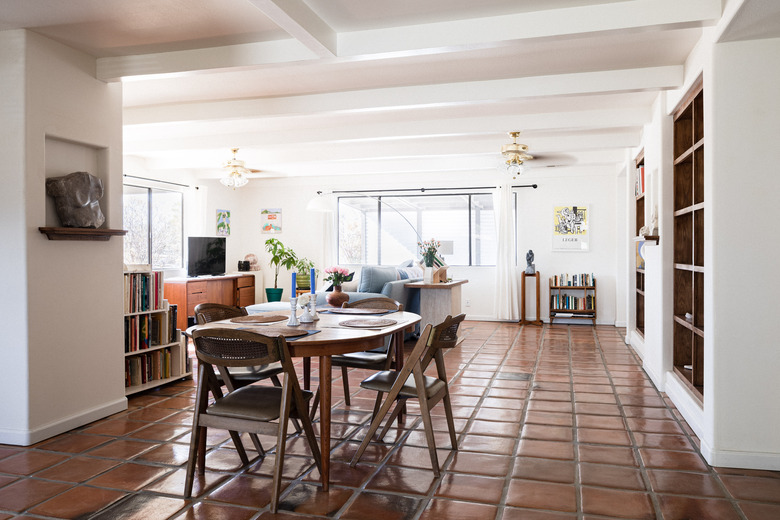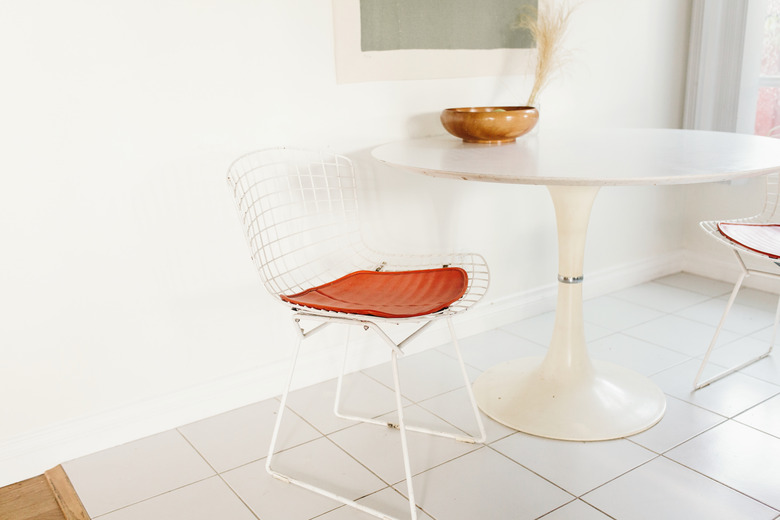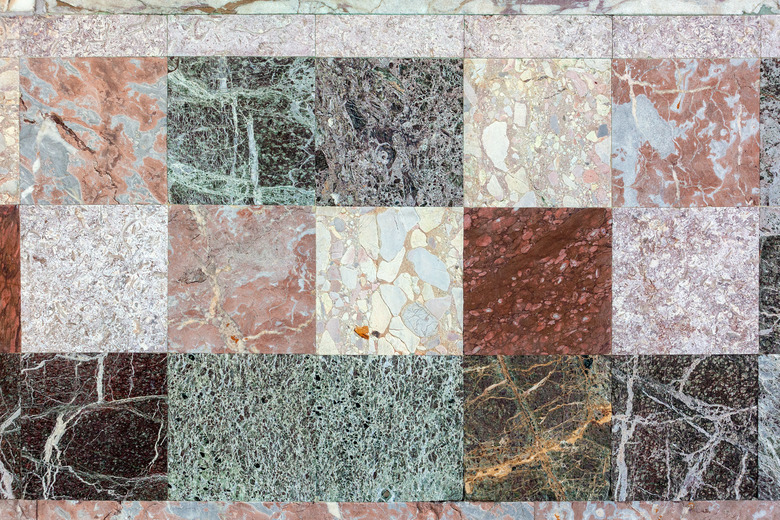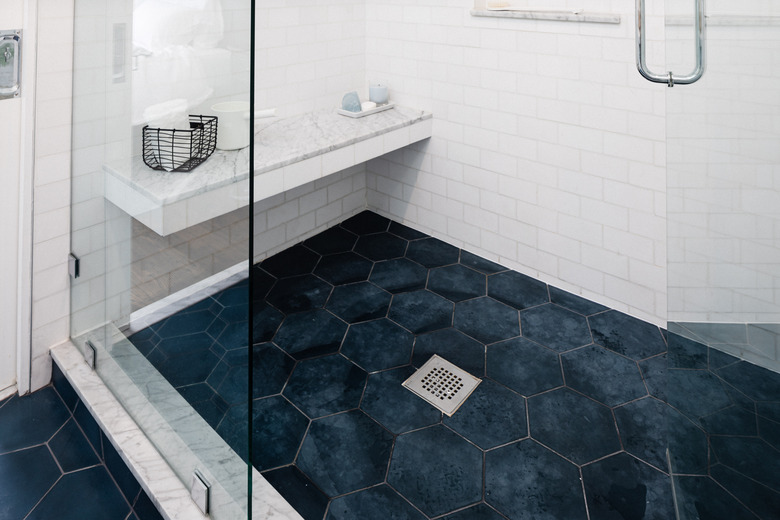Types Of Floor Tiles: A Homeowner's Comprehensive Guide
When you're looking to update your bathroom, kitchen or another area of your home, there's a chance you'll start with floor tiles — for instance, ceramic tile or porcelain tile. Floor tiles come in smany different shapes, sizes, textures, designs and materials, allowing those doing renovations to have a lot of flexibility in terms of what they want to use as their flooring. However, because each tile has a unique purpose, some are better for certain homes than others. Luckily, there are 12 common tiles from which to choose, each with its own attributes to help you make your decision.
General Pros and Cons of Floor Tiles
General Pros and Cons of Floor Tiles
Floor tiles are great to use in your home for a variety of different reasons. Before choosing tile over, say, hardwood flooring or carpeting, there are many pros and cons to consider.
Pros:
- Water resistant (to some degree)
- Easy to maintain and clean
- Durable
- Come in many different styles
- Cost is generally more affordable than other types of flooring
- Installation is not too difficult
Cons:
- Can get stained or scratched
- Can feel cold on feet or make the room cold
- Usually not slip resistant
- Thicker than some other flooring, such as vinyl, linoleum or laminate
- Can be expensive
Choosing a Tile for Your Home
Choosing a Tile for Your Home
These days, you can find just about any floor tile you have in mind, and what you choose depends on several factors, such as:
- Who lives in your home
- Your budget
- Where you want the tiles to go in your home
- Are the tiles eco-friendly?
- How often you plan on cleaning/maintaining your tile
- How long you want your tiles to last
For example, certain tiles like porcelain and ceramic are the go-to flooring type for kitchens and bathrooms. One of the biggest reasons is because they are stain-resistant, affordable and extremely durable. Other types of tile, such as many natural stone materials, are more likely to stain and can be more difficult to clean and maintain.
When choosing your tile flooring, it's also useful to think about who lives in your home. Those with small children and pets will find that certain tiles, like porcelain and ceramic, are better suited for homes with children and pets than those without. Natural stone tile, for example, may be better for homes with adults who want to raise the value of their home and give it a certain look. According to Mineral Tiles, natural stone is not as stain-resistant and can scratch easily, and this can be inevitable in homes with children or pets.
Choosing a Tile Material
Choosing a Tile Material
There are 10 different types of tiles that are most common, and each has certain features worth considering.
Ceramic tile: Ceramic tiles may be the most versatile tiles you can buy. They are affordable to purchase and install, and they hold up quite well to foot traffic. They also come in many different styles and designs, and they are hypoallergenic. The downside to ceramic is that they are more prone to chipping than porcelain tile, and most ceramic is not suitable for outdoor use.
Porcelain tile: According to Express Flooring, the biggest difference between ceramic and porcelain tiles is in how they are made. Both tiles are made from a clay mixture, but the mix for porcelain tiles uses a more refined clay and is fired at high temperatures. Ultimately, this makes porcelain much more durable than ceramic. It is suitable in extreme-moisture areas, like steam showers, as well as outdoors. However, porcelain tiles tend to be more costly and can be somewhat more difficult to cut.
Glass tile: According to Mr. Handyman, glass tile can make a great addition to any home, especially a bathroom, as it is impervious to water. Just like mosaic tile, the translucent pieces of glass tile in different colors can be used to make a truly beautiful arrangement. It is an eco-friendly material that can be easily cleaned and allows light to flood in. However, glass is rarely used for flooring since it cannot hold up well to foot traffic, and there are always safety concerns to consider. It's much more common to use glass for a backsplash or for a wall.
Marble tile: Marble tile is a natural stone tile that's generally considered high-end. It is one of the most luxurious types of tiles, and its life span is quite long, as you can see from the presence of this tile in ancient architecture. According to Inova Stone, the main benefit of marble is its beauty and overall durability. However, the downsides are that it's extremely expensive, difficult to maintain and very absorbent, so it can stain easily.
Granite tile: Granite is another natural stone tile that comes in many styles and is similar to marble in its look but is much more affordable than marble. When polished, granite is very slippery when wet, so polished tiles are not recommended for flooring.
Limestone tile: With limestone tile, you may only have the option of choosing from different shades or variations of a few colors. BuildDirect says that limestone is a great flooring option because of its affordability compared to other natural stone tiles. However, one of the cons is that limestone can be harder to maintain and will need consistent sealing.
Travertine tile: According to Home Reference, travertine is natural stone that is similar to limestone and marble in its look. It comes in many styles and colors, and there are also numerous finish options. It is a softer stone but is very durable. Many consider travertine to be a less-expensive alternative to marble.
Slate tile: If you are based in the U.S. and you want a natural stone tile that is sourced locally, then slate is your best option, as much of it comes primarily from the northeastern part of the U.S., according to Home Reference. Slate comes in many different colors and is an aesthetically pleasing tile. Slate typically has some surface texture, which may be a plus or a minus, depending on the application.
Terracotta tile: According to Poulin Design Center, terracotta tiles give homes an old-world charm and a rustic look that's hard to achieve with other types of flooring. They are highly durable tiles, but they are porous, so they can attract dirt easily. Terracotta is prone to water absorption, and because of this, you'll need to get it sealed, especially if you plan to use terracotta in areas with moisture.
Cement tile: With cement tile, you can get a lot of the same style and color options as you would get with ceramic. However, Factory Tile Depot suggests that there are many more cons than pros. Cement tile does not do well in high-moisture environments, as salt can form on the surface when the tile gets wet. However, it is eco-friendly, which may be something that's important to you when making your decision.
Cost Factors to Consider
Cost Factors to Consider
Before buying and installing kitchen floor tiles, it's important to consider the costs. According to HomeAdvisor, the average cost of indoor ceramic or porcelain tile ranges from 50 cents to $15 per square foot but can cost up to $35 per square foot depending on the unique details of the tile. The labor cost for installation ranges from $4 to $32 per square foot on average, which could be reduced if you install the tile flooring as a DIY project. Of course, the type of tile you're using will greatly impact this cost.
References
- HomeAdvisor: How Much Does It Cost To Install Ceramic Or Porcelain Tile?
- BuildDirect: Pros and Cons of Tile Flooring
- BuildDirect: Natural Stone Tile vs. Ceramic: What's Better for Your Project?
- Mineral Tiles: Porcelain Tiles vs Ceramic vs Natural Stone
- Express Flooring: Porcelain Tiles Vs Ceramic Tiles [Pros and Cons]
- Tile Restoration: Different Types of Tiles
- Mosaic Tile Company: What is PEI?
- Floor Critics: Cork Flooring: Reviews, Best Brands & Pros vs. Cons
- HomeAdvisor: Vinyl Flooring Pros & Cons
- Home Reference: The Pros and Cons of Travertine Tile
- Home Reference: The Pros and Cons of Slate Flooring
- BuildDirect: Limestone Tile Pros and Cons
- Express Flooring: Pros and Cons of Granite Flooring
- Mr. Handyman: Glass Tile: The Pros & Cons
- Factory Tile Depot: Pros and Cons of Cement Tile




